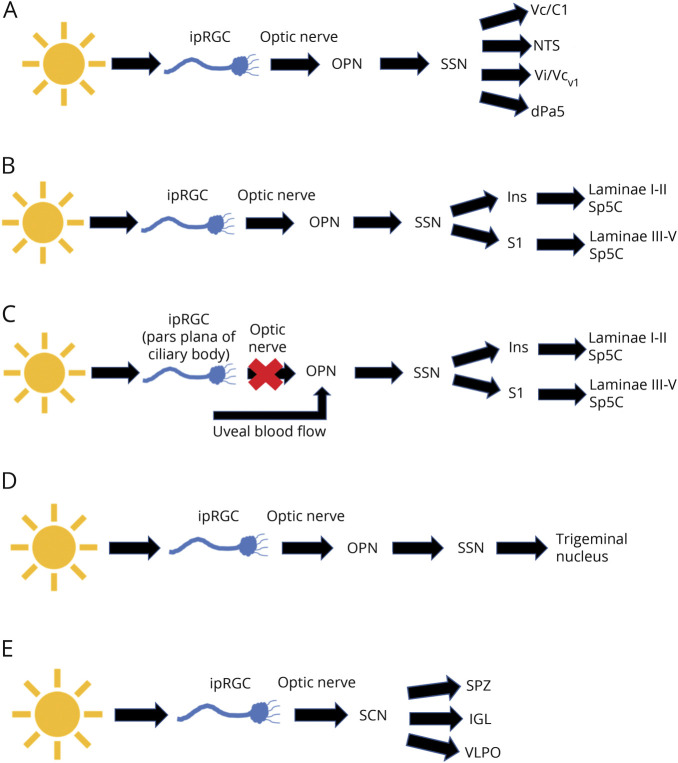Figure. Schematics of potentially relevant ipRGC pathways and TBI symptoms.
(A–C) Pathways that affect PTH symptoms: (A and B) pathways 1 and 2 showing ipRGC projections to the OPN, SSN, and different downstream pathways; (C) pathway 3 showing ipRGC connections that bypass the optic nerve and alter signaling in the OPN and downstream pathways involved in PTH symptoms. (D) Pathway 4 showing ipRGC projections to the OPN, SSN, and trigeminal nucleus that may contribute to DES/NOP. (E) Pathway 5 showing ipRGC projections to the SCN and downstream pathways including the SPZ, IGL, and VLPO, which are involved in the control of circadian rhythm. DES = dry eye syndrome; ipRGC = intrinsically photosensitive retinal ganglion cell; NOP = neuropathic ocular pain; OPN = olivary pretectal nucleus; PTH = posttraumatic headache; SCN = suprachiasmatic nucleus; SSN = superior salivatory nucleus; VLPO = ventrolateral preoptic.

